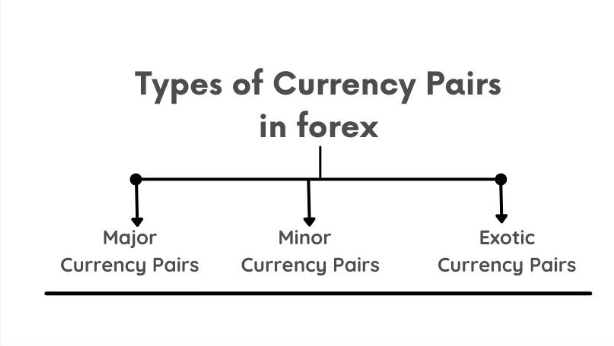Major, Minor & Exotic Currency Pairs Explained
If you’re new to Forex trading, one of the first things you’ll need to understand is currency pairs the building blocks of the entire market. Since Forex trading always involves two currencies traded against each other, knowing the different types of pairs is essential.
In this post, we’ll break down the three main categories of currency pairs: major, minor, and exotic and help you decide which ones best suit your trading goals.
What Is a Currency Pair?
A currency pair consists of two currencies:
- The base currency (first one listed)
- The quote currency (second one listed)
For example, in the pair EUR/USD:
- EUR = base currency
- USD = quote currency
If the exchange rate is 1.10, it means 1 Euro equals 1.10 U.S. Dollars.
1. Major Currency Pairs
Major pairs are the most traded currency pairs in the world. Each includes the U.S. Dollar (USD) on one side, paired with another major global currency.
Examples of Major Pairs:
- EUR/USD – Euro / U.S. Dollar
- GBP/USD – British Pound / U.S. Dollar
- USD/JPY – U.S. Dollar / Japanese Yen
- USD/CHF – U.S. Dollar / Swiss Franc
- AUD/USD – Australian Dollar / U.S. Dollar
- USD/CAD – U.S. Dollar / Canadian Dollar
- NZD/USD – New Zealand Dollar / U.S. Dollar
✅ Key Features:
- High liquidity
- Tight spreads
- Lower volatility (more predictable)
- Ideal for beginners
Why Trade Major Pairs?
They are the most stable, cost-effective, and widely covered in news and analysis. Because of their popularity, you’ll find the most resources, strategies, and tools built around them.
2. Minor Currency Pairs (Crosses)
Minor pairs, also known as cross currency pairs, do not include the U.S. Dollar but involve other major currencies.
Examples of Minor Pairs:
- EUR/GBP – Euro / British Pound
- EUR/JPY – Euro / Japanese Yen
- GBP/JPY – British Pound / Japanese Yen
- AUD/CHF – Australian Dollar / Swiss Franc
- NZD/CAD – New Zealand Dollar / Canadian Dollar
✅ Key Features:
- Moderate liquidity
- Slightly wider spreads
- More volatile than majors
- Good for intermediate traders
Why Trade Minor Pairs?
They offer unique trading opportunities and can react differently to economic events compared to major pairs. Traders often use them for diversification or when major pairs are ranging.
3. Exotic Currency Pairs
Exotic pairs combine a major currency with a currency from an emerging or smaller economy.
Examples of Exotic Pairs:
- USD/TRY – U.S. Dollar / Turkish Lira
- EUR/ZAR – Euro / South African Rand
- USD/THB – U.S. Dollar / Thai Baht
- GBP/MXN – British Pound / Mexican Peso
- AUD/SGD – Australian Dollar / Singapore Dollar
✅ Key Features:
- Low liquidity
- Wider spreads
- High volatility
- Sensitive to political and economic instability
Why Be Cautious with Exotic Pairs?
They can offer large profit potential, but they also come with higher risk. These markets are often more unpredictable and can be impacted by sudden news or low liquidity.
How to Choose the Right Currency Pairs to Trade
Here’s a simple guide:
| Trader Level | Best Pair Type | Reason |
|---|---|---|
| Beginner | Major Pairs | Stable, low-cost, easier to analyze |
| Intermediate | Minor Pairs | More movement, opportunities for profit |
| Advanced | Exotic Pairs | High risk, high reward opportunities |
Before trading any pair, research the currencies’ economies, interest rates, political climate, and historical volatility.
Final Thoughts
Understanding the difference between major, minor, and exotic currency pairs is foundational to your success in Forex. The pair you choose impacts everything your risk level, costs, trade timing, and potential returns.
Pro Tip: Start with 2–3 pairs (like EUR/USD or GBP/USD), master them with a demo account, then gradually expand to others.


